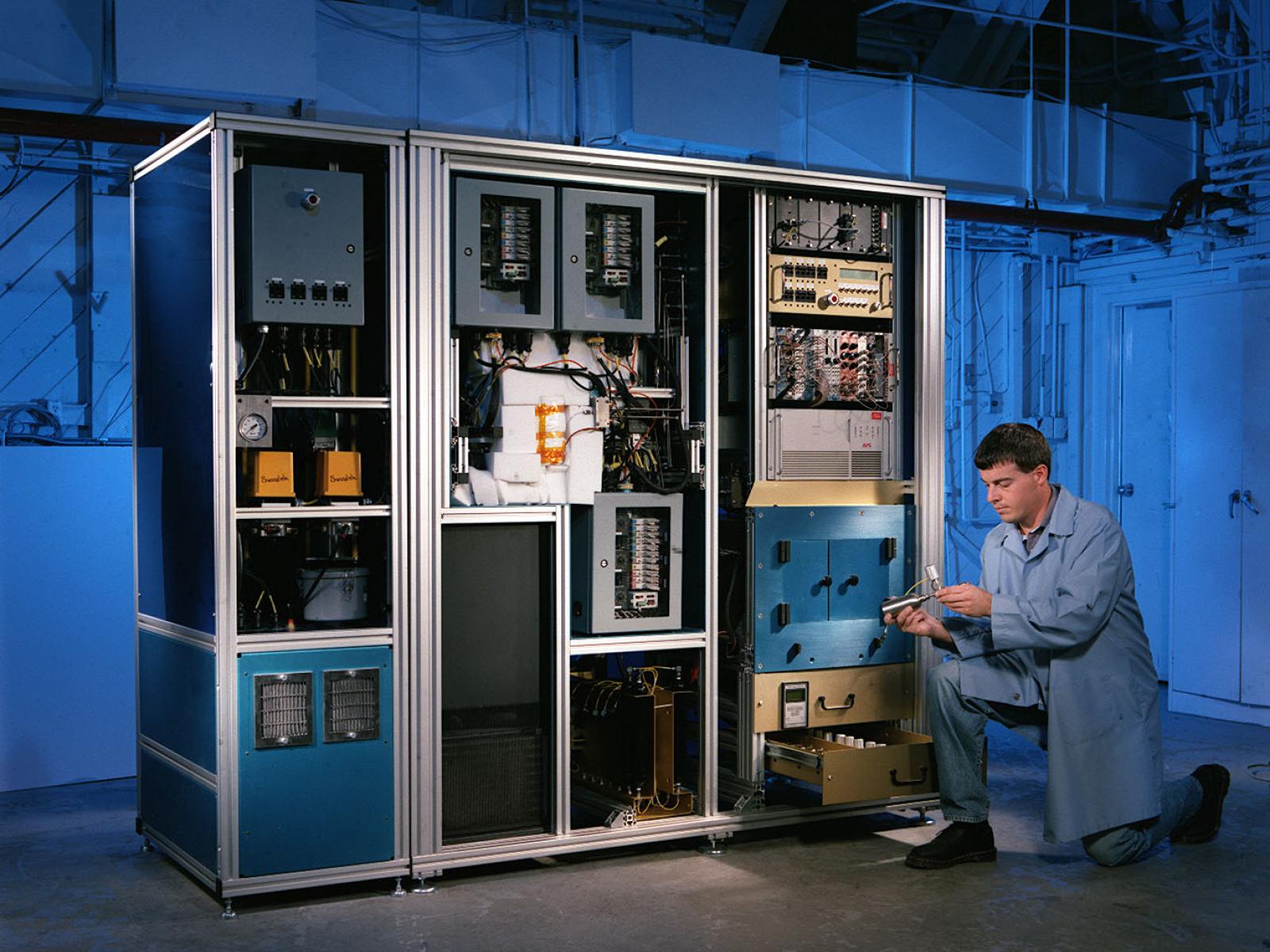PNNL in Richland Detecting Nuclear Explosions Around the World

In the 1990s, PNNL developed the Automated Radioxenon Sampler-Analyzer, or ARSA, which analyzes air samples for radioactive xenon, or radioxenon, that seeps from underground nuclear explosions and could be used to detect nuclear weapons testing.
(Photo by Pacific Northwest National Laboratory)
Just reading the headlines makes it clear that these are anxious times. International tensions are rising and threats abound. For example, many are concerned about the proliferation of nuclear weapons. Some nations, like North Korea with its recent nuclear explosives testing, are overt in their ambitions. Others may be attempting to secretly develop and test nuclear weapons.
Our national security depends on developing better ways to detect nuclear explosions with increased sensitivity. At the Department of Energy's Pacific Northwest National Laboratory, researchers are advancing the science and technologies to meet this challenge. They work with colleagues around the world to deploy technologies to ensure that we can detect and characterize suspicious events.
We were the first to detect trace amounts of radioactivity in airborne debris entering the United States following the 2011 Fukushima nuclear reactor accident.
PNNL's decades of work in this area builds on capabilities that hark back to our Hanford heritage. More than 50 years ago, we supported the plutonium production mission to supply material for the U.S. nuclear weapons program. This gave rise to our expertise in radiochemistry and nuclear physics. Our contributions to Hanford cleanup led to additional expertise in contaminant transport. Over the past 25 years, we have drawn upon our capabilities to detect trace radioactive materials in the environment to enable the detection of nuclear explosions—and it has served the world well.
In November of last year, the National Nuclear Security Administration and the Department of State hosted an event to commemorate the 60th anniversary of the important role of science and technology in nuclear explosion monitoring. I had the privilege of representing PNNL and highlighting our contributions to breakthroughs that enable the United States and international partners to monitor the globe for signs of illicit nuclear explosions.
Although we may live in uneasy times, PNNL will keep delivering the science and technology needed to detect nuclear explosions—keeping us at least one step ahead of those who would threaten our national security.
For example, before 1990, there was no real international capability to detect radioactive debris for signs of nuclear explosions. In particular, it was virtually impossible to detect radioactive xenon (an indicator of nuclear explosions) in a routine, automated way. Around that time, PNNL developed two technologies to automate processes to do just that. One automated particulate sampling and analysis techniques and the other automated radioactive xenon sampling, enrichment and measurement. Without these advancements, around-the-clock detection of nuclear explosions would be cost-prohibitive.
These are among the technologies used daily in the International Monitoring System for the Preparatory Commission for the Comprehensive Nuclear-Test-Ban Treaty Organization. They have enabled the collection and analysis of tens of thousands of individual measurements across the globe in the last 10 years—with more to come.
PNNL operates the only CTBTO PrepCom-certified radionuclide laboratory in the nation. Our scientists receive air filters and bottles of gas collected from international monitoring stations, and re-analyze and certify the makeup of those materials. Some of this work takes place at PNNL's Shallow Underground Laboratory, which houses some of world's most sensitive radiation detection systems.
PNNL operates the only CTBTO PrepCom-certified radionuclide laboratory in the nation.
PNNL's highly sensitive nuclear detectors serve other purposes too. We were the first to detect trace amounts of radioactivity in airborne debris entering the United States following the 2011 Fukushima nuclear reactor accident. Our experts' analyses informed Japanese and U.S. efforts to understand and respond to the disaster.
PNNL continues to push the limits of detection of minute amounts of key radioactive materials—as few as a thousand atoms in samples collected by sophisticated instrumentation. We also support international research to address the rising background levels of radioactive debris in the atmosphere, for example, from nuclear power generation and isotope production. We need to ensure we can still isolate and recognize materials and events of interest as background levels increase.
Although we may live in uneasy times, PNNL will keep delivering the science and technology needed to detect nuclear explosions—keeping us at least one step ahead of those who would threaten our national security.
Steven Ashby, director of Pacific Northwest National Laboratory, writes this column monthly. To read previous Director's Columns, visit pnnl.gov/news and filter by Director's Columns in our Latest Stories.
Published: January 24, 2017